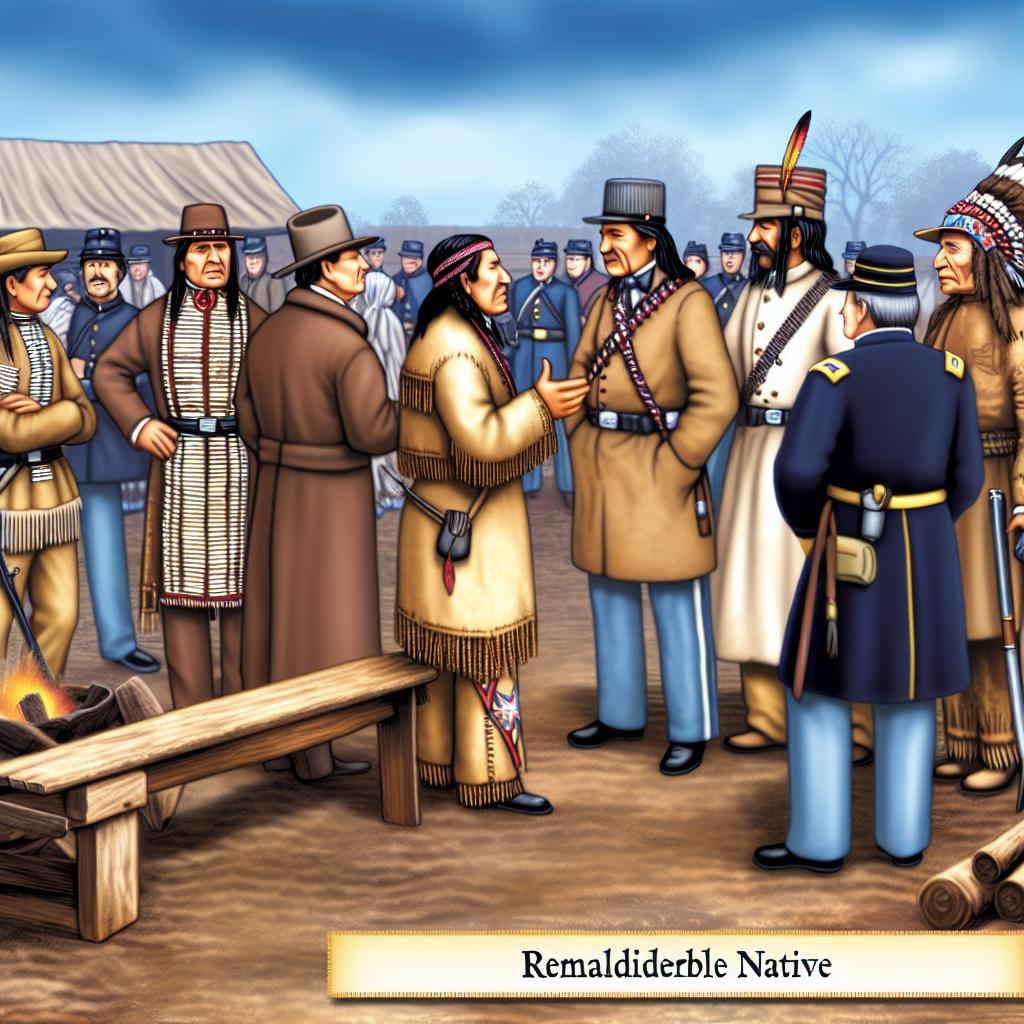The Involvement of Native Americans in the Civil War
During the American Civil War, Native Americans played a significant, albeit often underappreciated, role in the unfolding of one of the most critical periods in U.S. history. Their involvement is a chapter not widely recognized in standard historical narratives, yet it holds essential insights into the socio-political dynamics of the era. To truly grasp the complexity of Native American participation, one must look deeper into the multifaceted decisions faced by tribes amidst the turmoil of war and encroachment on their territories.
Native American Alliances
As the Civil War progressed, Native American tribes were compelled to make difficult choices regarding which side to support. Many tribes found themselves in strategically located territories, which forced them to maneuver through a landscape fraught with shifting alliances and pressures from both the Union and the Confederacy.
For numerous Native American communities, the decision to align with the Confederacy was influenced by previous treaties and economic interests that predated the war. Notably, the Five Civilized Tribes—comprising the Cherokee, Choctaw, Chickasaw, Creek, and Seminole nations—were located in Indian Territory, present-day Oklahoma. These tribes had existing tensions with the U.S. government, stemming from forced relocations and broken agreements. The Confederacy appeared to some leaders as a more promising ally that might better protect their sovereignty and lands. An influential figure in this alliance was Stand Watie, a prominent Cherokee leader who attained the rank of brigadier general in the Confederate army, becoming an instrumental player in the Southern cause.
Divisions Among Tribes
It’s crucial to acknowledge that not all individuals within these tribes shared a uniform perspective on the Civil War’s allegiances. The conflict introduced internal divisions, leading to different factions within the same tribe supporting opposing sides. In the Cherokee Nation, for instance, while figures like Stand Watie supported the Confederacy, significant numbers stood with the Union under the leadership of individuals like John Ross. Ross and his supporters believed that siding with the Union offered the best chance of safeguarding their rights as recognized by federal treaties and laws.
Military Contributions
Native Americans made notable contributions to both the Union and Confederate military endeavors. They served as soldiers, scouts, and in various indispensable roles, utilizing their deep understanding of local terrains to significant advantage in several battles. Native troops, including those from Creek and Seminole regiments, were particularly known for their guerrilla warfare tactics and stealth capabilities.
For many Native Americans who fought for the Union, particularly those outside the grip of the Five Civilized Tribes, their participation was motivated by a combination of strategic necessity and a hope that the Union would honor treaties and protect their lands. Their military contributions were not just about the war at hand but also part of a broader battle for autonomy, survival, and recognition of their rights.
Impact and Consequences
The Civil War’s conclusion brought profound repercussions for Native Americans, regardless of which side they had chosen. The post-war period witnessed intensifying pressure on Native lands, as the U.S. government often failed to honor existing treaties and agreements in the rush for national reconciliation and expansion. Reconstruction efforts primarily centered on bridging the chasm between North and South, frequently overlooking the rights and needs of Native American populations.
The period following the Civil War set a stage characterized by continued tensions between Native tribes and the U.S. government. This era saw forcible relocations and a further loss of territory as American settlement and economic ambitions pushed westward. The promises some Native leaders had hoped to secure through their alliances proved largely illusory in the face of federal neglect and exploitation.
Conclusion
The involvement of Native Americans in the Civil War stands as a powerful testament to their resilience and strategic acumen amid a period of national strife. Their stories are not solely about military alliances but reflect broader themes of survival and adaptation amidst unrelenting external pressures. Appreciating their contributions is a crucial step toward a more comprehensive understanding of Civil War history. Such understanding reveals the multifaceted impacts of the war and highlights a narrative of Native adaptation and struggle that would continue long after the war’s cannons fell silent. Recognizing these contributions helps us explore the enduring legacy of the Civil War on Native American communities and their ongoing fight for recognition, rights, and respect in subsequent American history.

